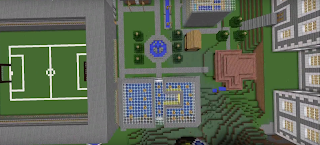I recently discovered that you can actually create text adventures directly in Google Forms (!) – and that’s pretty cool. Sure, Forms can't handle variables or remember player choices, but for simpler, choice-based games, it works surprisingly well. If you want more advanced features, there are tools like Twine – but this time I wanted to show how far you can get with just Google Forms.
The goal was to create a real game that could be used in the classroom. I started with a simple question to ChatGPT:
"I want to make a game that connects to STEM. I was thinking about how a computer works. Do you have a better idea? And this way of teaching a STEM subject through a text adventure – is that game-based learning?"
As you can see, I wasn’t thinking about standards or learning goals at that point. The important thing was to start testing the idea. ChatGPT and I turned every stone – four parallel chats and over 300 questions and answers later, the game started to take shape.
From Idea to Game-Based Learning
What I created follows the model of design thinking pedagogy:
Start with a question or problem area ("How does a computer work?" + STEM goals)
Create an engaging format (text adventure)
Develop the content iteratively with nodes, characters, and choices
Map learning goals and standards afterward
The result became Packet Panic! A digital adventure where the student plays as a data packet navigating a school network to deliver a file – quickly, securely, and before classmate Rasmus gets there first.
This is Game-Based Learning in practice:
Interactive learning adventure
Based on real-world tech (DNS, TCP/IP, Wi-Fi, firewalls)
Built-in problem solving, decision-making, and feedback
Looking to use Packet Panic in the classroom?
A full teacher guide is available with learning goals, discussion prompts, and classroom tips.
Social and Technical Learning at the Same Time
The game activates CASEL competencies without calling attention to it:
Self-awareness: Students notice their choices – right/wrong, safe/risky
Self-management: Time pressure (Rasmus), ownership of decisions
Social awareness: Characters reflect different strategies and attitudes
Relationship skills: Interaction between characters, dialogue with Tammie
Responsible decision-making: Every choice has technical and narrative consequences
And the Best Part: It Aligns with Standards
We didn’t start with standards – but when we checked afterward, we hit many of them:
ISTE Student Standards
Digital Citizen: Covers network safety, DNS errors, firewalls
Computational Thinker: Players analyze network paths and test solutions
Knowledge Constructor: Players build technical understanding through their choices
U.S. State Standards (Sample)
Florida: Supports Career & Technical Education in ICT – concepts like DNS, DHCP, firewalls
Washington: Aligns with Networks & Internet standards – IP, routing, DNS
California: Matches CS Standards on devices, protocols, TLS, checksums
Indiana: Covers Digital Citizenship and Computer Science – ethics, risk assessment, troubleshooting
Additional standard connections:
ISTE: Digital Citizen – Teaches network security and digital consequences
ISTE: Computational Thinker – Encourages logical reasoning and structured problem-solving
ISTE: Knowledge Constructor – Reinforces key network concepts (e.g., TCP, DNS, TLS)
Florida: ICT Education – Simulates real-world IT infrastructure and protocols
Washington: Networks & Internet – Explores design, routing, and infrastructure
California: CS Networks – Teaches foundational networking knowledge
Indiana: Digital Citizenship – Fosters ethical use, safety, and resilience online
Conclusion:
You don’t have to start with standards to build meaningful teaching experiences. With a simple tool like Google Forms, you can build text-based games that engage, teach, and surprise.
Try it yourself – you’ll be amazed at how far you can go. I've written a separate guide on how to build one yourself using Google Forms – check it out if you want to create your own classroom adventure!

























